This week a post about a pennywort which is causing a problem to our waterways!
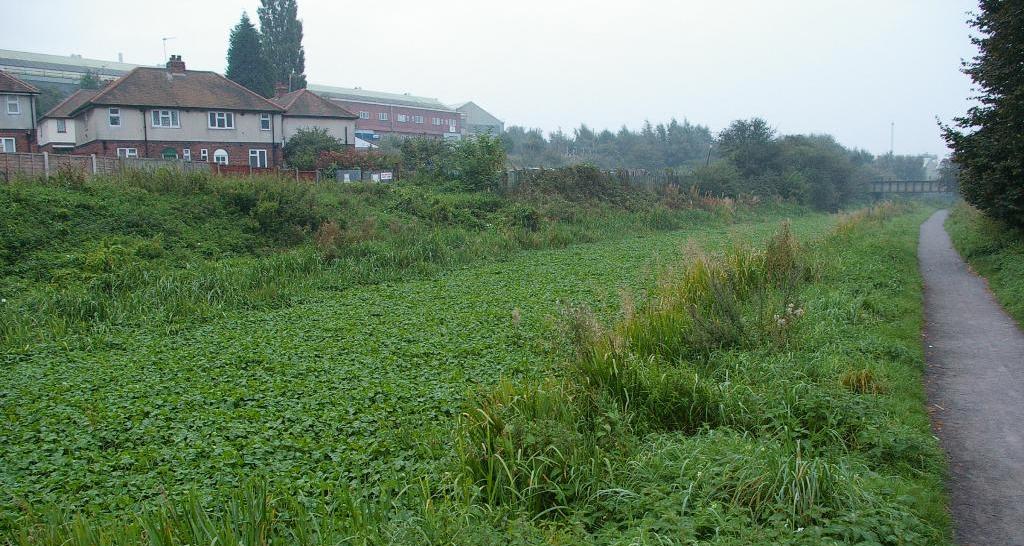
The Pennyworts are in their own family: The Hydrocotylaceae or Pennywort family according to Stace.
The family is in between Araliaceae (number 143) and Apiaceae (number 145).
Many authorities, including R.B.G. Kew and the R.H.S., however classify it in the Araliaceae!
But Stace writes: ‘Differs from Apiaceae and Araliaceae in its distinctive habit and presence of stipules, and from Apiaceae in its fruits without oil bodies (or carpophore); appears anomalous in either family’.
From Wikipedia: The genus Hydrocotyle has between 75 and 100 species that grow in tropical and temperate regions worldwide. A few species have entered the world of cultivated ornamental aquatics.
There are 4 species in the B.I. according to Stace and only one is native and the other three are introduced. The Floating Pennywort can cause a major problem in our waterways!
Pictures by Mike Poulton, Matt Summers and Wikipedia Commons. Links on Scientific Name from the (online) Plant Atlas 2020 and links on Common Name from Wikipedia or other source. See next page.
Information about habitats and uses also by various sources above and colour-coding is blue background for habitat, wildlife and interesting information. Green for uses and pink for medicinal uses or threat to our waterways.
Contents:
Hydrocotyle vulgaris or Marsh Pennywort
H. ranunculoides or Floating Pennywort
H. moschata or Hairy Pennywort
H. novae-zeelandiae or New Zealand Pennywort
Centella asiatica or Asiatic Pennywort and Gotu Kola
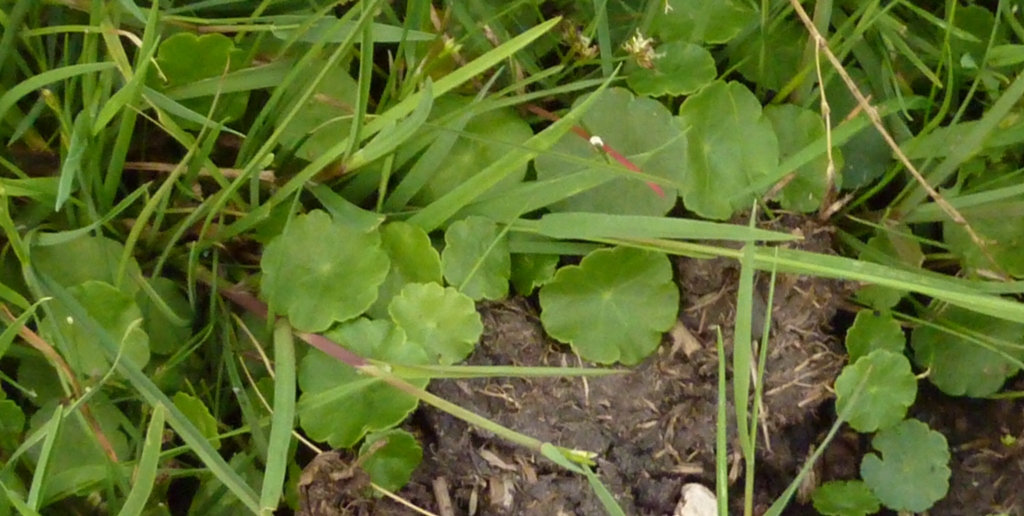
Hydrocotyle vulgaris or Marsh Pennywort
A mat-forming perennial herb found in a wide range of damp or wet habitats, including carr, mires, fens, fen-meadows, swamps, marshes, in soakways and along spring-lines, and in dune-slacks and wet hollows in stabilized shingle. In very oceanic areas it grows in drier habitats, such as turfed wall-tops.
In Britain it is the only native Hydrocotyle, growing in wet places such as fens, swamps, bogs and marshes. For example, it is a component of purple moor grass and rush pastures – a type of Biodiversity Action Plan habitat. The flowers rarely flower; mostly self-pollination takes place.
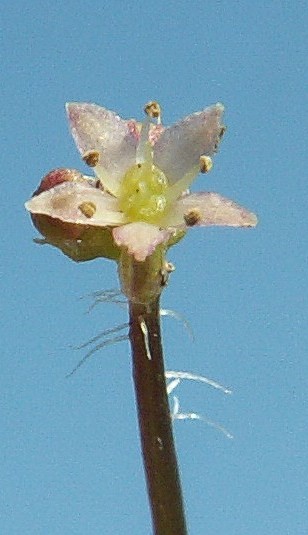
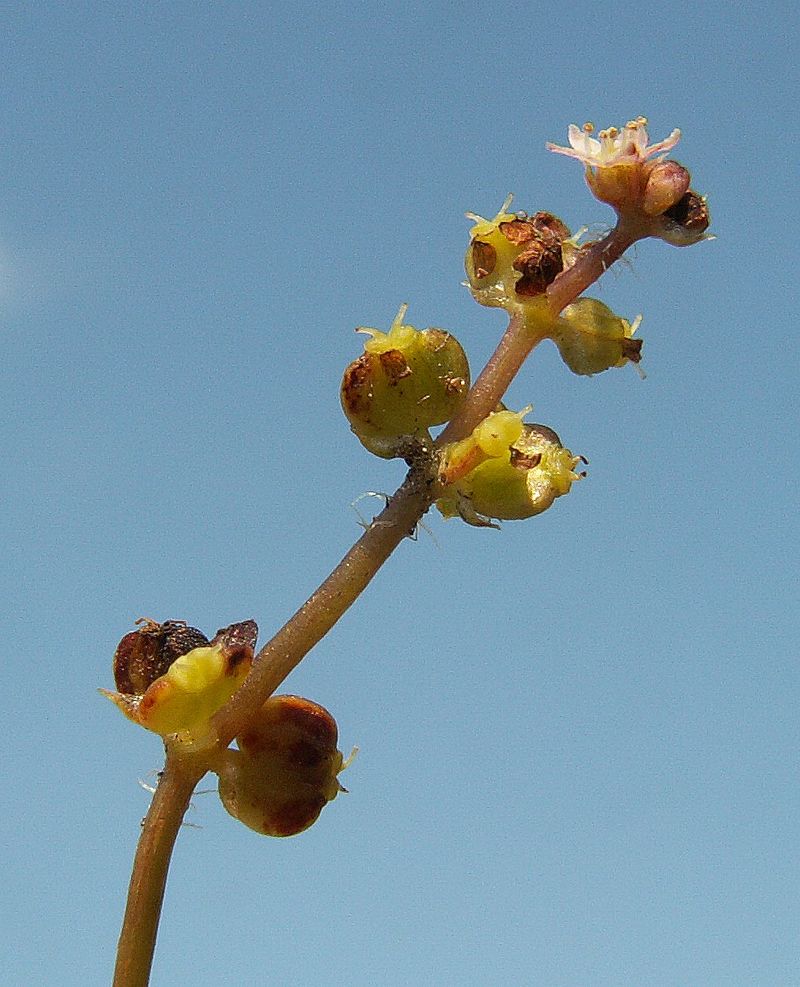
Leaves can be cooked. They have a strong carroty taste and cannot be eaten in quantity!
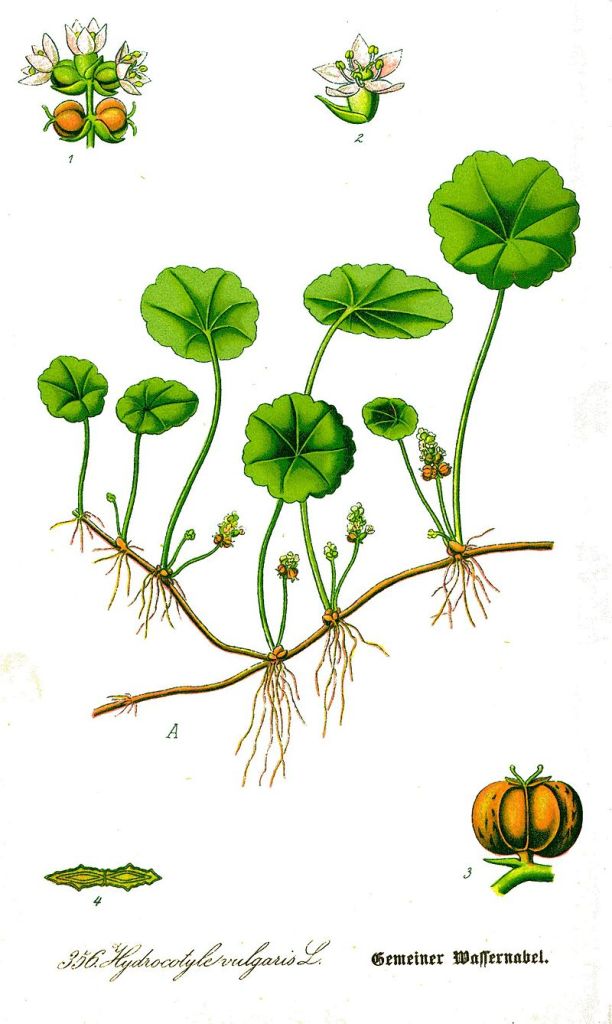
It may also be grown as an aquatic plant in mud at the side of a pond or water garden in up to 2 inches of stagnant water.
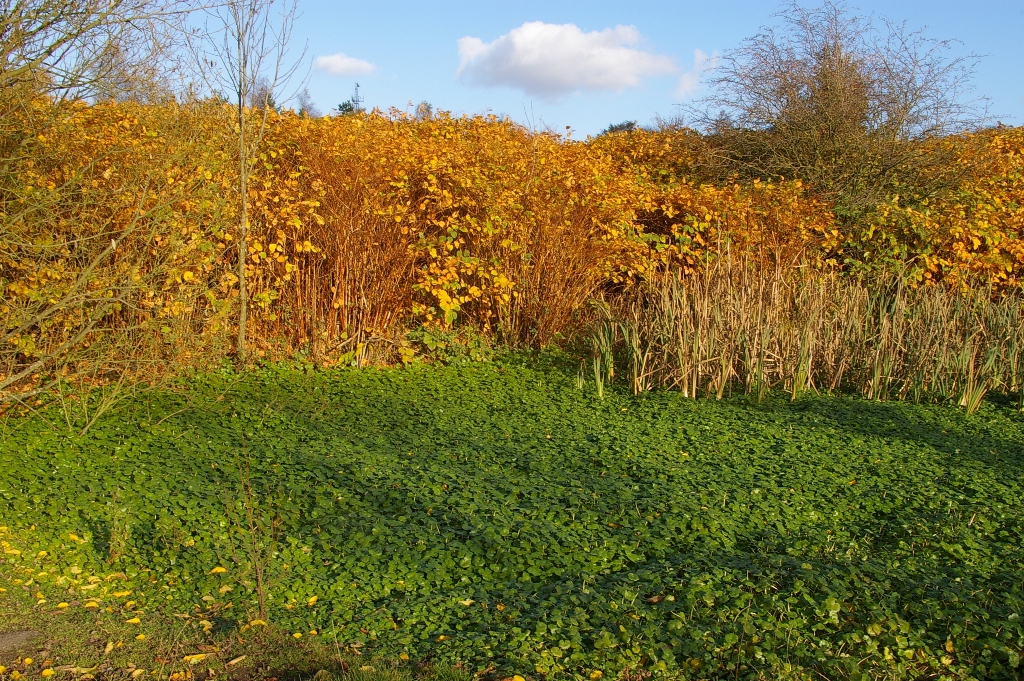
Two examples of the invasive Floating Pennywort. Above is taken on a golf course run-off pool at Rowley Regis and below on the duck pond at Sandwell Park Farm. (by M. Poulton)
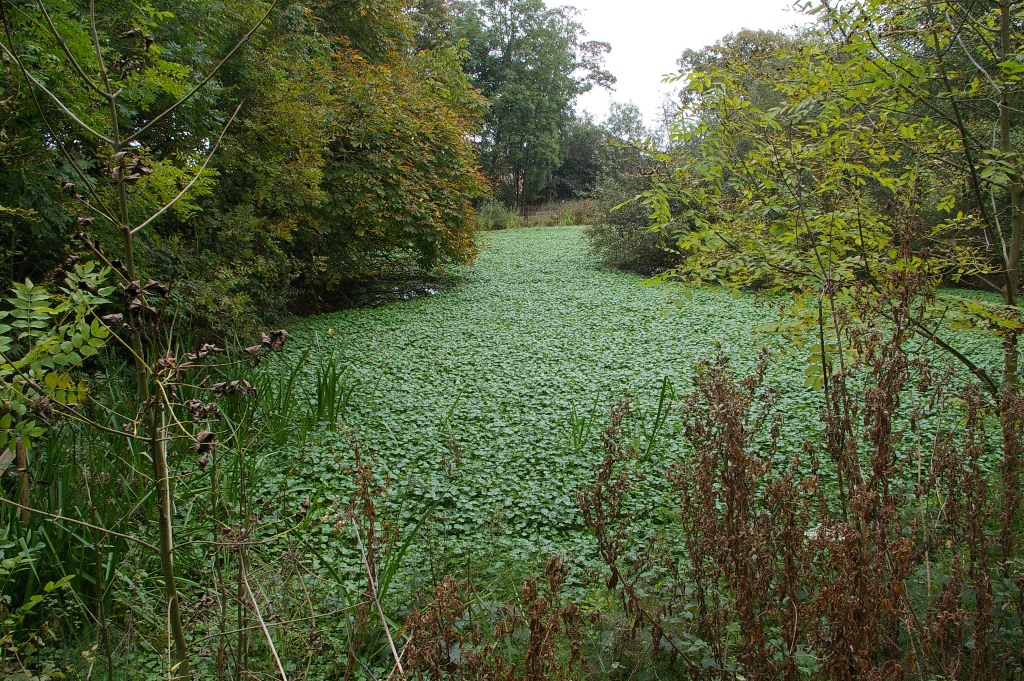
H. ranunculoides or Floating Pennywort (Neophyte)
A robust perennial herb found rooted in mud or as a free-floating or emergent aquatic on the surface of still or slowly moving water, such as lakes, ponds, streams, ditches and canals, as well as the margins and backwaters of rivers. It can form exceptionally dense colonies very rapidly, excluding native species and causing serious restrictions to navigation by boats. Rooted plants flower and set seed; floating plants spread by rooted stem fragments, often attached to boats or as free-floating ‘rafts’, allowing it to spread rapidly along watercourses.
Native of North America; widely naturalized in Central and South America and elsewhere, as well as western Europe and Australia.
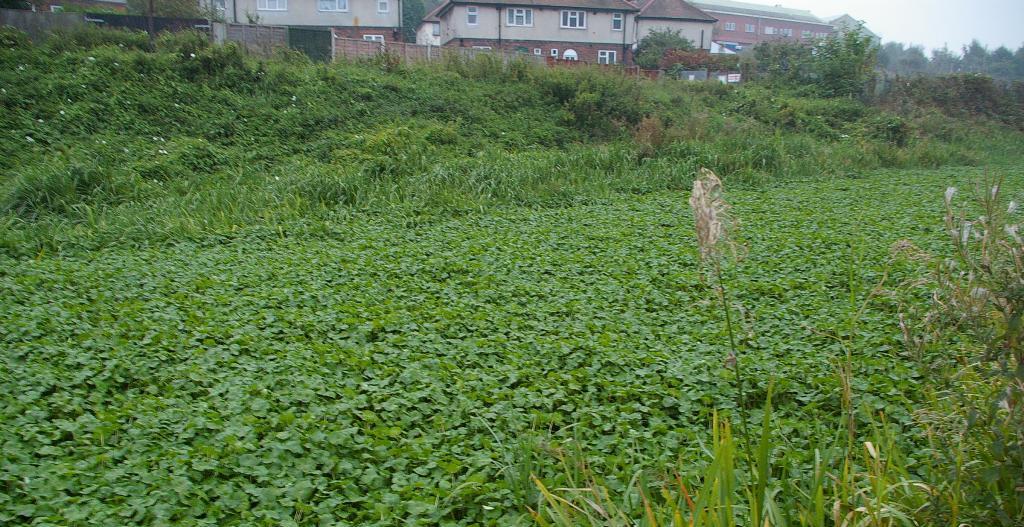
Floating Pennywort in Stourbridge Extension Canal, September, 2008 (by Mike Poulton)
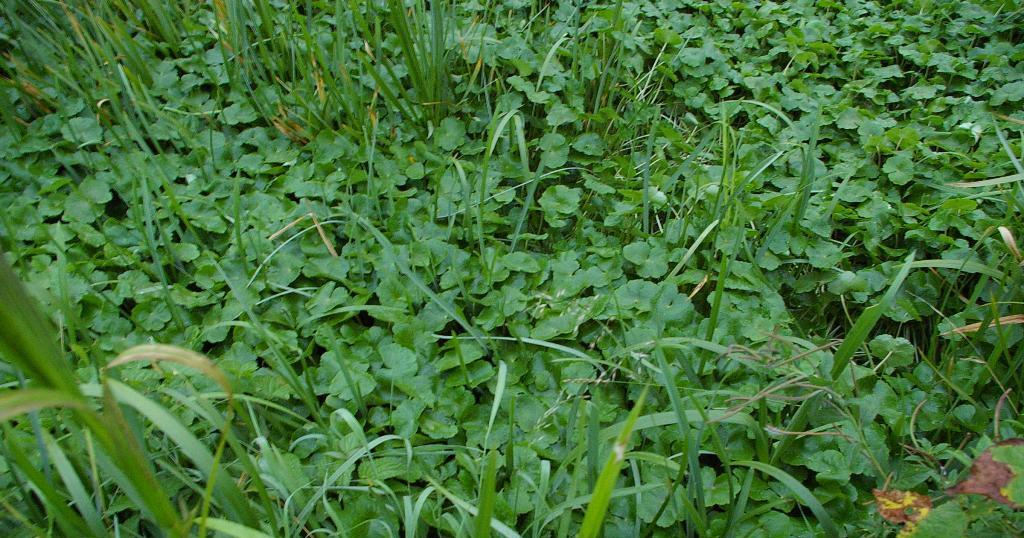
H. ranunculoides has been widely sold in aquatic plant nurseries and was first recorded in the wild in 1990 (Chelmsford, South Essex), soon afterward becoming a pest in the Pevensey Levels (East Sussex). From these ‘bridgeheads’ it has spread rapidly in the 21st century, especially in lowland England and Ulster, causing major obstacles to boats on many waterways. It continues to spread rapidly despite being banned from sale in 2014 and the significant efforts undertaken to eradicate it from many rivers and canals. It is now considered to be one of the most invasive aquatic plants in Britain, as well as an emerging threat in Ireland, with an estimated annual cost of control likely to amount to many millions of pounds.
In Europe, Floating Pennywort is included since 2016 in the list of Invasive Alien Species of Union concern (the Union list). This implies that this species cannot be imported, cultivated, transported, commercialized, planted, or intentionally released into the environment in the whole of the European Union.
From: Yorkshirewater.com news in 2022 (M. Poulton)
‘Floating pennywort weevils have been introduced as a biocontrol to two sites in West Yorkshire to control the growth of floating pennywort – an invasive non-native species (INNS) which can choke the life out of watercourses.‘
‘The weevils will target floating pennywort, or Hydrocotyle ranunculoides, which is native to Central and South America and was brought to the UK in the 1980s as an ornamental plant for the aquatic trade.
After years of safety testing and research by CABI, a South American weevil, Listronotus elongatus, was given Ministerial approval for release in England to act as a natural pest control. The weevil has co-evolved with floating pennywort in its native range to only feed and develop on this plant host and reunited with it in the invaded range, it can help to control its spread without the need for mechanical or chemical interference in the watercourses.’
H. moschata or Hairy Pennywort (Neophyte)
A perennial herb which is naturalized in lawns and on grassy roadside banks. It was known in cultivation in Britain by 1893 and recorded from the wild in 1953. Native of New Zealand.
H. novae-zeelandiae or New Zealand Pennywort
This differs from the species above with larger fruit and leaves are crenate. It is not listed in the Online Plant Atlas 2020 but according to Stace it occurs in W. Cornwall.
According to the ‘fishkeeper’ website: ‘This species is an excellent oxygenator but does grow fairly quickly and must be kept in check, especially in smaller ponds. It is, however, much slower growing than the invasive Hydrocotyle ranunculoides. When pruning this plant back, always dispose of the cuttings very carefully “never allowing it to enter our native waterways.’
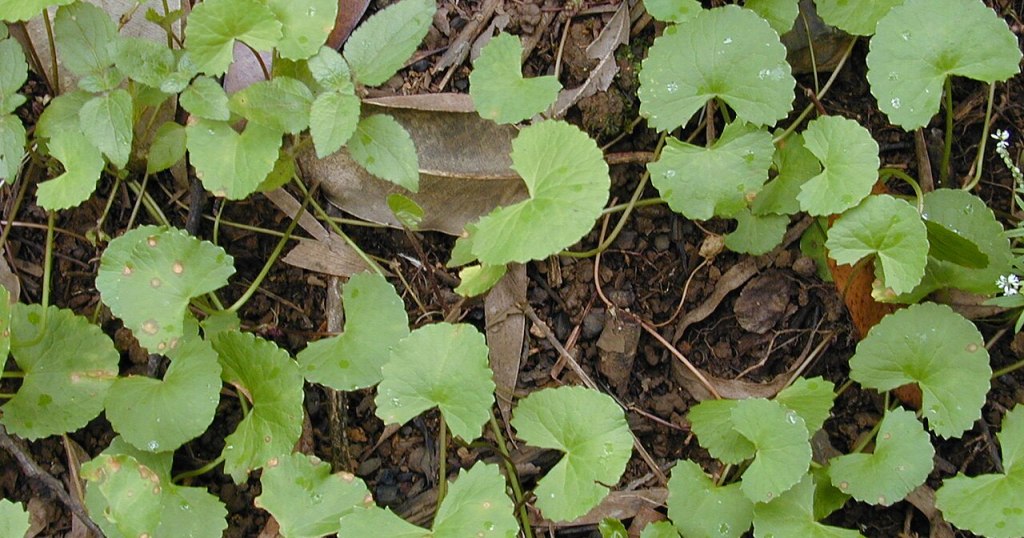
Centella asiatica or Asiatic Pennywort and Gotu Kola
This is very similar to our Pennyworts and used to be known as Hydrocotyle asiatica. It doesn’t however occur in Britain but is an important vegetable and medicinal plant so I thought I will add this in my post as the odd one out!
Centella asiatica or Indian Pennywort, Asiatic Pennywort and Gotu Kola, is native to tropical regions of Africa, Asia, Australia, and islands in the western Pacific Ocean. Because the plant is aquatic, it is especially sensitive to biological and chemical pollutants in the water, which may be absorbed into the plant.
It can be cultivated in drier soils, including sandy loam, as long as they are watered regularly enough (such as in a home garden arrangement).
In Burmese cuisine, raw pennywort is used as the main constituent in a salad mixed with onions, crushed peanuts, bean powder and seasoned with lime juice and fish sauce.
Centella is used as a leafy green in Sri Lankan cuisine, being the predominantly locally available leafy green, where it is called gotu kola or vallaarai. It is most often prepared as malluma, a traditional accompaniment to rice and vegetarian dishes, such as dal, and jackfruit or pumpkin curry. It is considered nutritious.
In addition to finely chopped gotu kola plants, the gotu kola malluma may be eaten with grated coconut, diced shallots, lime (or lemon) juice, and sea salt.
A variation of porridge known as kola kenda is also made with gotu kola in Sri Lanka. Gotu kola kenda or Vallaarai kanji is made with well-boiled red rice with some extra liquid, coconut milk first extract, and gotu kola purée. The porridge is accompanied with jaggery for sweetness. Centella leaves are also used in modern sweet pennywort drinks and herbal teas. In addition the leaves are served stir-fried whole in coconut oil, or cooked in coconut milk with garlic or dhal.
In traditional medicine, C. asiatica has been used to treat various disorders, dermatological conditions and minor wounds.
In the context of phytoremediation, C. asiatica is a potential phytoextraction tool owing to its ability to take up and translocate metals from root to shoot when grown in soils contaminated by heavy metals.
